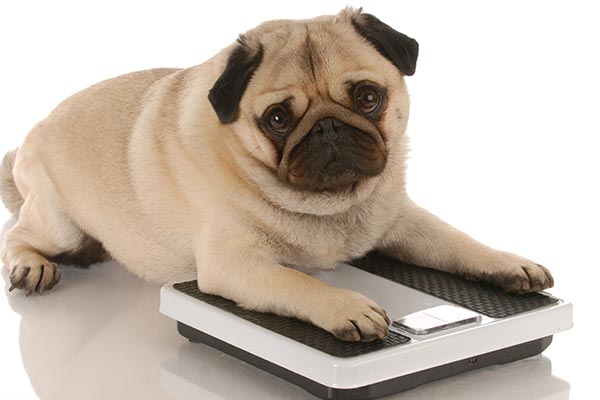Help Your Pet Shed Pounds

Obesity isn’t just a human health crisis in the U.S. About 50% of pets are also overweight. That’s 80 million pets with a higher risk for health issues like diabetes, kidney disease, high blood pressure, cancer, and arthritis.
Pet owners sometimes make incorrect assumptions about weight. Your kitty might not seem overweight, but fur could be hiding unhealthy stores of fat. Each animal has an individual healthy range that takes into account factors like breed, size, and age.
See a veterinarian to determine your pet’s healthy range. They’ll measure weight, body shape, and mass, and rate your pet the on a veterinary body composition chart. If the vet says your cat or dog needs to lose weight, here are some options.
Bust the Myths
First, don’t get bogged down by myths about pet weight. Here are a few common, but false, myths.
- MYTH: Spaying/neutering causes weight gain. This myth probably exists because many animals are fixed at a young age, while they are still growing rapidly.
- MYTH: Pets need food to calm down. Vets sometimes hear this excuse. “But my dog won’t go to sleep without a bedtime snack!” Timed snacking is really just a habit. Replace it with a healthier habit instead, like cuddling, playing, or petting.
- MYTH: Exercise balances out diet. Even a high-energy pet that gets lots of exercise can be overweight. Excessive table scraps, treats, or nibbling on garbage can add too many calories.
- MYTH: My dog is muscular, not fat. Some dog breeds look very muscular, like boxers and rottweilers, but they are just as prone to being overweight. Rely on your vet’s assessment.
Take Healthy Steps
There are many things you can do to manage your pet’s weight. Follow any specific advice from your vet, and consider adding some of these healthy habits.
Count calories. Do you really know how many calories your pet is consuming? Try tracking it for a few days, and compare with the calorie limit from your vet. Measure meals on a scale and see food nutrition labels to do the calculation.
Check food quality. Some pet foods are higher in carbs than necessary. If the carb content is 60% or more, it’s definitely time to have a discussion with your vet about the nutrition content. A different food may be in order.
Limit snacking. In psychology, the technical term for snack rewards is “variable reinforcement.” When you give food as a reward, you’re telling your pet to wait or beg for more. It can be helpful when training, but shouldn’t be a lifetime go-to. Replace treats with playtime or cuddling.
Make exercise fun. You and your pet will both enjoy exercise more if it’s also playtime together. For cats, playing with toys adds significant exercise to their day. Dogs often need to be able to run around. Even just 15 minutes of exercise a day can make a significant impact for your pet. Be cautious if your pet is older, has health concerns, or if the weather is very hot.
Be patient. Pet weight loss can (and should) be very slow. It also varies by breed and size. A loss of one pound would barely be noticeable on a 88-pound dog, but would be alarming on a 6-pound cat. So try to be patient with your pet’s weight loss plan. It might take months to see a difference.
Have more questions about pet weight management? Get guidance from the experts at Academy Animal Hospital. A healthy weight for your pet is within reach!
